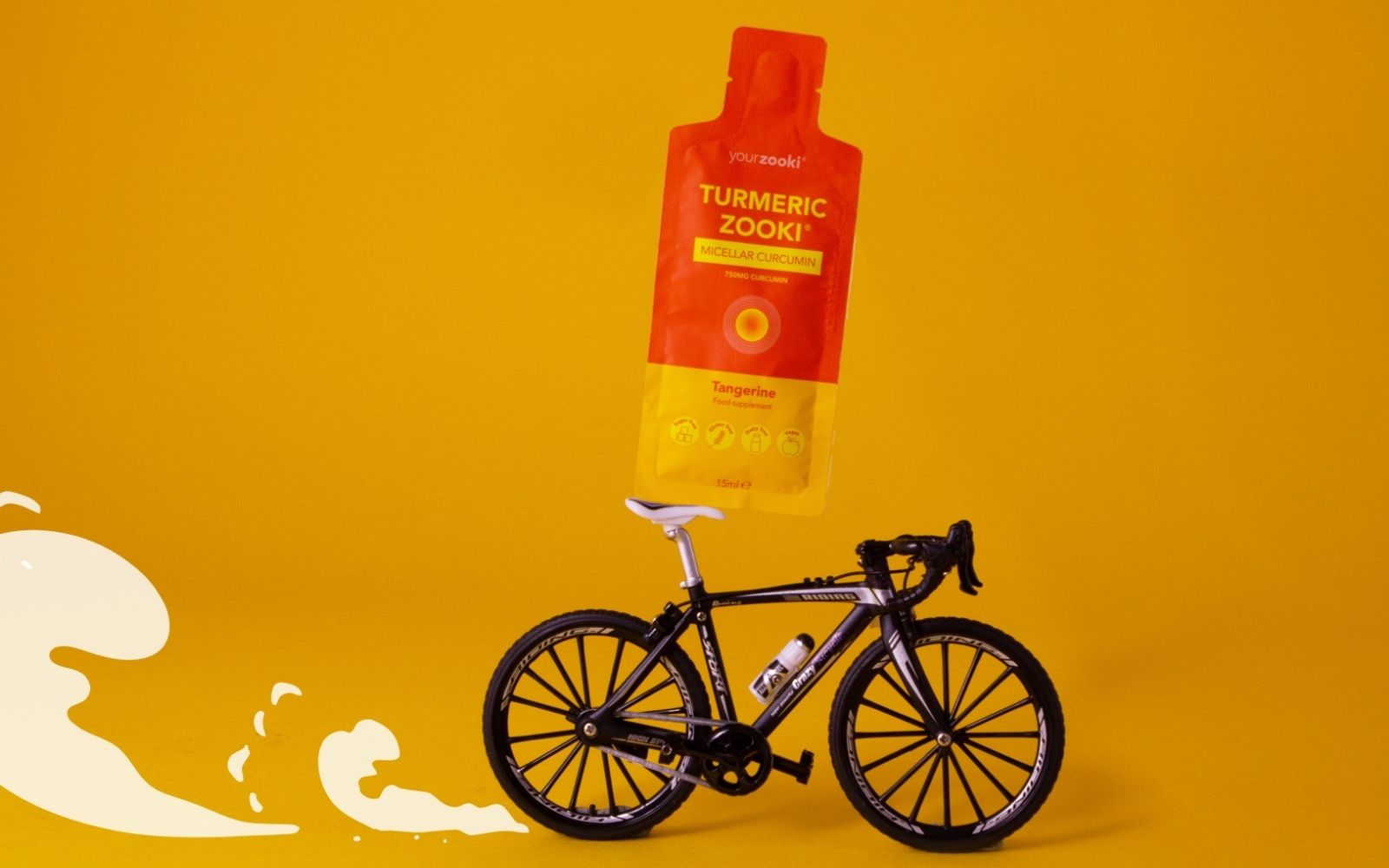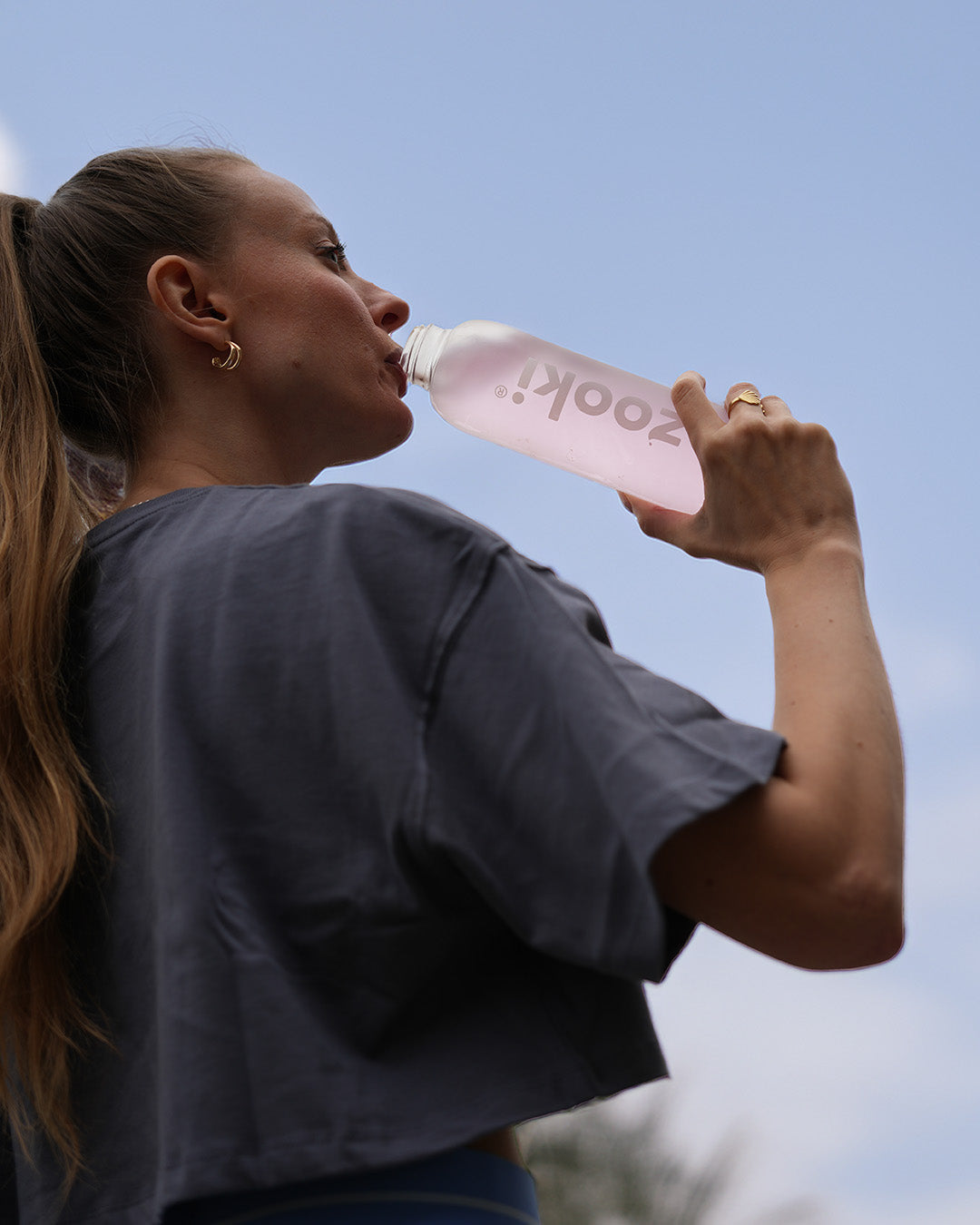The IOC Manual of Sports Injuries defines sports injury as "damage to the tissues of the body that occur as a result of sport or exercise". Whether you’re an athlete or a fitness novice, chances are you've experienced some form of injury in your lifetime. Injuries are diverse and need to be treated accordingly to avoid further damage. Although injuries are common in sport and exercise, you can prevent many of them with the correct knowledge, training and preparation. By adapting your nutrition and fitness routine, you may be able to shorten recovery time too!
There are many things that can cause injuries and by being aware of them you can reduce your chances of injury. This article will explain the different types of injuries and causes, how to treat them, and how to prevent them from occurring.
Common sports injuries
There are two main types of sports injuries; acute and overuse.
Acute sports injuries
Acute injuries can occur from sudden trauma, with the pain often emerging immediately. These injuries include fractures, strains, sprains, dislocations, or skin grazes and can happen from either indirect or direct factors. Indirect factors, also known as intrinsic causes, are when an injury doesn't directly occur from an external force. Instead, these types of injuries usually happen from over-stretching, faulty technique, fatigue, lifting too heavy or increasing programming too quickly. Direct factors, also known as extrinsic causes, result from an external collision. This could be with another person, a piece of equipment, or even the ground or wall. These are more common in sports, such as in football, hockey or rugby, but can also happen in the gym or during home workouts.
Overuse sports injuries
On the other hand, overuse injuries occur over a period of time. They are usually a result of poor technique, alignment or overtraining and typically take more investigation as the cause is often less obvious. These injuries are triggered by excessive and repetitive loading of the tissue, so they're also known as repetitive strain injuries (RPS for short). Some of the main types of overuse injuries include tennis elbow, tendonitis, shin splints, bursitis, stress fractures and chronic inflammation.
There are many causes of overuse injuries, however, they usually happen when the body isn’t given enough time to adapt between stressors. During exercise, the body endures stress in the working areas, which can later adapt to withstand the force without strain again.
To explain this simply, imagine a bridge. Like us, this bridge has its weak points. A heavy lorry goes over the bridge (this is like your exercise) and causes a couple of tiny cracks to appear. The workers come along and fix those cracks, which will make the bridge even stronger so it can withstand more weight next time. Then, another lorry goes over the bridge, and this time the lorry is a little heavier and creates more cracks. The workers, again, come along and fix these cracks before an even heavier lorry comes along, and the process continues. The lorries' increase in weight is just like your "progressive overload" when training. This means your performance improves over time as your workouts become more challenging. The bridge is like your muscles, which get stronger, and the workers are like your body's natural adaptation response. Now imagine if that second lorry comes over the bridge before the workers can finish the repairs. The cracks already apparent become even bigger and create further weaknesses. The workers carry on repairing the damage of both lorries. But then a third lorry comes over, then a fourth, and fifth. The workers can't keep up with the damage created, so the bridge breaks bit by bit over time. This breaking is the inevitable injury. The lorries do not have to get heavier to put excessive strain on the bridge. These repetitive microtraumas cause weaknesses and overuse injuries.
Types of muscle fatigue
When your muscles are fatigued, it can make it difficult to sufficiently perform exercises that you’d usually manage with adequate energy levels. Repeated exertion of muscle contraction can cause this fatigue. As the muscle's energy stores are depleted, it takes oxygen and nutrients away from other areas of the body, including the brain.
There are two main types of muscle fatigue; peripheral and central fatigue. Peripheral fatigue occurs at or close to the muscular junction, and central fatigue happens in the central nervous system. This reduces the outflow of motor impulses. Both types of muscle fatigue reduce the force at which a muscle can contract and create muscle soreness, twitching, cramping, and heavy breathing. However, there are ways to combat this, such as resting, stretching, maintaining adequate hydration levels and nutrition. Omega 3 fish oil, vitamin D and creatine supplementation can help reduce the level at which this fatigue happens. Additionally, sufficient carbohydrate intake fuels the brain and muscles, and caffeine has been found to increase muscle fatigue resistance.
Sports injury treatment
Although we favour injury prevention, there is always a risk of injury. If an acute injury occurs, PRICE is the first point of call. This stands for:
P – Prevent further injury
R – Rest
I – Ice
C – Compress
E – Elevate above the heart
PRICE is designed to avoid further damage and reduce inflammation and swelling, the body's natural response to internal damage. It’s essential to control this inflammation to help speed up recovery and prevent other harm.
Whether your injury is acute or chronic, it’s vital to seek a professional's advice as soon as possible. A good physiotherapist, chiropractor, or osteopath will be able to diagnose and provide treatment or refer you to someone who can.
Rehabilitation exercises
For acute injuries, it’s important to reduce the cause of the stress and then rebuild strength with rehabilitation exercises. Rehabilitation is crucial post-injury to avoid reinjuring the site or creating further damage. That’s because when the injury is amended, the muscles and joints will be weaker (atrophy or muscle wastage) temporarily and may lack mobility. The rehabilitation process will improve blood flow, increase synovial fluid production (the joint's natural lubrication), and rebuild muscle strength (hypertrophy). A recovery strategy including these exercises can be prescribed by a physiotherapist, osteopath or chiropractor and should contain fundamental modified movements.
Keep in mind that these exercises may not be appropriate straight after injury. Complete rest around the injured site is essential for recovery. The time required can fluctuate based on the type of tissue damaged, the injury severity, and the nature of the injury. It may be appropriate to work on other body areas to maintain fitness levels during this time. For example, if a leg injury occurs, you might find seated upper body exercises are okay. This may also help injury recovery, as a 2018 study from the University of Saskatchewan in Canada found that participants who exercised other body parts maintained more strength in an immovable injury (such as a broken arm) than those who did not. Your clinician should provide a recovery plan including rest and rehabilitation time scales. During this time, other factors may speed up recovery too.
For example, your diet affects recovery and injury prevention. Without a healthy and balanced diet, you may lack vital protein, vitamins and minerals to repair muscles and low GI carbohydrates to provide sufficient energy. Adequate nutrients are also crucial for injury prevention, as chronic injuries may occur if the body cannot recover properly from previous training sessions.
Injury and inflammation
Your body's first immune response to injury is inflammation. Inflammation can remain acute or become chronic, and both have very different effects on the body.
Acute inflammation
Acute inflammation protects the body from further injury, reduces infection rate, keeps any broken bones stable, and helps to prevent further damage. The body, however, likes to overreact. This is a better response than underreacting but means that it requires some assistance to help regulate and assess the injury. The NHS guidelines suggest icing immediately after injury for 15 to 20 minutes and then every two hours later. This will help decrease swelling, reduce pain, and minimise circulation by constricting the blood vessels.
Chronic inflammation
Chronic inflammation can cause more harm than good. It can reduce the range of motion at a joint, cause atrophy (muscle loss), and increase the chances of muscle imbalances, leading to further injuries. Chronic inflammation can help determine the cause of the pain, but reducing overall inflammation will increase recovery time.
Inflammation is also the body's initial repair response during the post-exercise body tissue adaptation process. Again, this is a crucial aspect of recovery when tightly regulated.
There are two main aims when aiding recovery: increasing the rate of muscle synthesis and reducing inflammation. The methods to accelerate the recovery process through anti-inflammation are identical, whether from injury or general post-exercise adaptations.
Some studies suggest using certain nutritional supplementation to support recovery. Turmeric can help reduce acute and chronic pain by desensitising the muscle's pain receptors. Curcumin, the anti-inflammatory component of turmeric, can also help reduce oxidative stress and support muscle adaptations and post-exercise recovery.
Other nutritional supplements that may reduce inflammation are omega 3 fatty acids, vitamin C, collagen, tart cherry juice, quercetin and creatine. In addition, external methods such as massage, compression therapy, cold therapy (including cryotherapy and ice baths) may also aid recovery and low-intensity exercise can help minimise inflammation.
Excessive alcohol consumption has also been linked to suppressing the anabolic response of muscle tissue, which reduces the rate of muscle recovery.
Sports injury prevention
There will always be a risk of injury, but the goal is to lower this risk by using various techniques and adaptations.
A few simple and effective ways to prevent an injury is to control the environment, your body’s state and the technique and form in which you perform exercise. These factors consist of:
- An effective warmup and cooldown;
- Check for spillages and obstacles around the area you are exercising in (to reduce extrinsic causes);
- Maintain room temperature around 18c;
- Ensure workout programmes balance opposing muscle groups and include a prehabilitation or conditioning regime;
- Make sure your workouts are programmed with the correct level of intensity (weight, reps and sets) to challenge with minimal risk of injury;
- Sustain a sufficient level of aerobic fitness, balance, strength, agility and coordination;
- Maintain optimal mental and physical alertness (ensuring enough energy through nutrition, sleep and rest);
- And allowing rest and recovery time between workouts to ensure the body is in optimal working conditions.
Post workout recovery
There are two main reasons why insufficient recovery time between workouts can lead to injury. The first is down to structural weakness; as the body tissue recovers post-workout, you lose muscle strength, Range Of Motion (ROM) and increase muscle swelling and soreness, which may mean you can’t perform exercises to the best of your ability. This lack of strength and technique can cause overcompensation and additional pressure on joints and connective tissue. This, in turn, may lead to injury.
The second reason is the extra strain put on already damaged body tissue. During exercise, you create microtears in the muscle tissue and deplete muscle energy stores. The recovering body part requires at least 24-48 hours between workouts to repair and adapt to the damage created. The whole adaptation process can take between 6-8 days to recover fully. When you don’t allow adequate time for these physiological alterations, stressors through exercise will cause further damage. This is like the lorries going over the damaged bridge described in section two. Controlling inflammation can help speed up this recovery process and prevent injuries. Additionally, the body may take longer to recover from exercises using long muscles rather than short muscles, a larger ROM, eccentric movements (lengthening of the muscle) and isolation movements (single-joint exercises).
Prehabilitation exercises
Prehabilitation exercises, also known as preventative rehab, are listed above. These are simplified exercises to help strengthen muscles that are underperforming and improve muscle firing patterns. A physiotherapist or specialist personal trainer can take you through an evaluation to determine which muscles are underperforming or overcompensating. They can then create a conditioning programme with stretching, pain management techniques and exercises to realign the body and help muscle firing patterns. Alternatively, Pilates exercises or basic conditioning programmes can help you maintain a healthy body.
Summary
In conclusion, many intrinsic and extrinsic injuries are preventable with correct training techniques, recovery regimes and preparation. As the saying goes, "prevention is better than cure", however, there will always be some degree of injury risk. Understanding the difference between injury pain and exercising aches is important to ensure appropriate steps are followed. Make sure you include a warmup, cool down, stretches and conditioning exercises in your programming to keep your body alignment and muscle firing patterns functioning correctly. It is also important to check the area you are working out in is suitable for your exercises. This is even more important as home workouts have become more popular. If you're new to exercise or not entirely sure about your form and workout regime, book a session with a personal trainer or another fitness professional.
Acute injuries can become chronic if the appropriate protocols are not followed, so always seek a professional's diagnosis and advice if you do find yourself with an injury. Treating the injury promptly will help improve the longevity of your training and overall fitness levels.






Share:
What is the vegan diet & is it good for you?
What is acne? A beauty therapist's essential guide